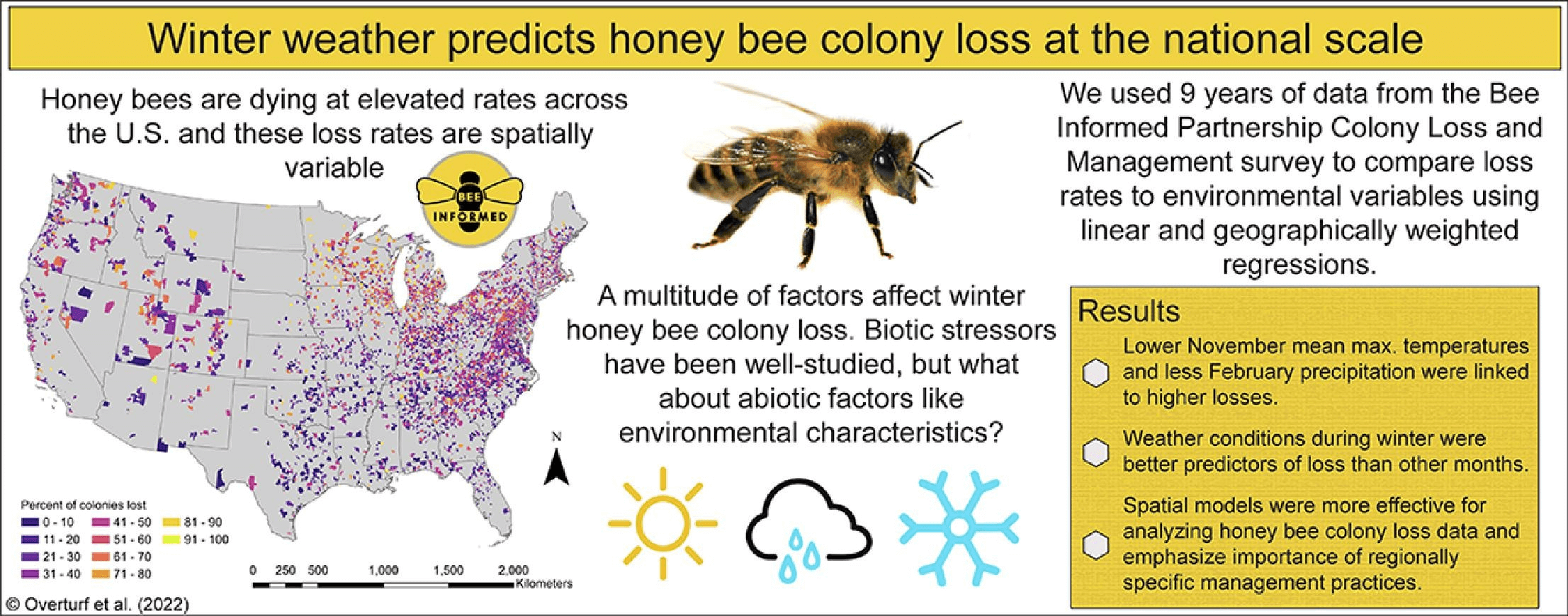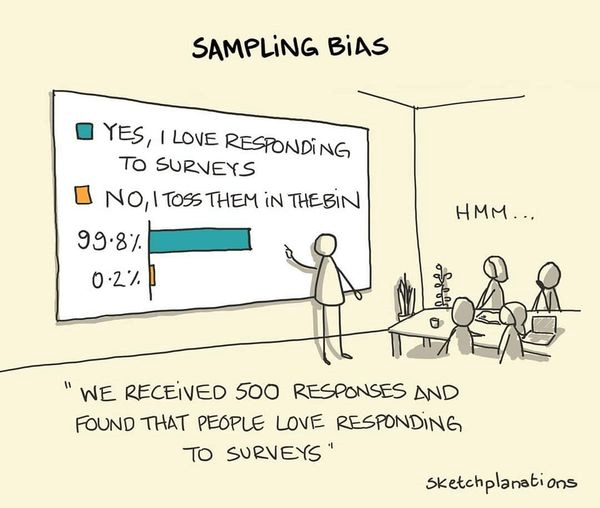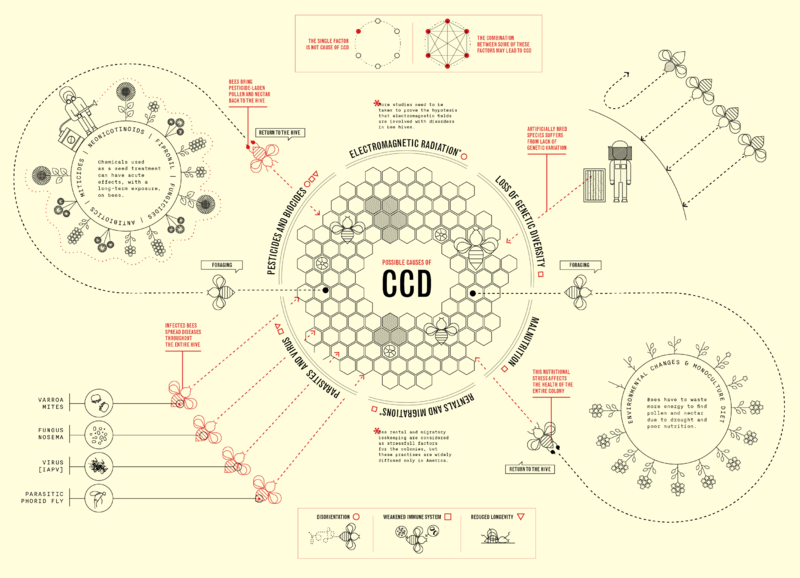No matter how much effort is put into prevention, bees die. A lot. Some years more than others, and when that happens environmentalists promote campaigns against weedkillers and other agricultural tools, but the number one killer of bees is not climate change or land use, it is parasites. Bees live in a small enclosed space and diseases can devastate them in a short amount of time. The only way to prevent losses of 50 percent or more is with modern medicine against pests like varroa mites and others. Parasites are all three of the top three reasons bees die of external causes.
There are other factors, severe weather will cause more deaths, and for the few bee species that can be estimated (7 out of approximately 25,000 – that’s right, we don’t even know how many bee species exist) land use changes can be implicated. If someone tries hard enough, they can even find a way to “correlate’ farming to dead bees.
That is not the goal of a recent paper, but they use flawed ‘false equivalence’ to enable that, by acknowledging mites but then putting farming and weather events right next to them. I like bees, I want them to stick around, but no one is helped if pesticides are given false equivalence with the pests they kill in bee deaths.
Farming is a non-existent peril for bees outside the statistical noise range but even weather events are not worth mentioning beyond creating an average. Yes, hurricanes sometimes happen but listing those alongside the top killer is a way to boost their credibility the same way as if a journalist talks to an expert on climate change and then drops in a denier for ‘balance.’

if they invoke global warming, hurricanes, and pesticides in their false equivalence with mites, how do I argue they may be going after farming? The authors use pleas for action by Greenpeace that have no evidence basis – a manufactured claim that one third of the world’s food, 100 crops, etc. need bees or we are doomed. It was entirely made up. USDA knows it, scientists know it, everyone who reads Google outside the first 20 results knows it. But the authors ignore USDA data showing pollinators are only involved in about $15 billion of food and instead blindly repeat the Greenpeace claim that it is 1,000% greater.
Here is the science truth. The 12 crops that provide 90 percent of our food are not pollinated by bees. Some are wind pollinated, some are self-pollinated or propagate asexually or parthenocarpically – they don’t need fertilization. Not by bees or the tens of thousands of flying insects that would take their place if that one species of bees disappeared tomorrow.
Only 13 crops need bees. Will the food system collapse without…almonds? You are literate to know science does not matter in press releases, but press releases matter to journalists, and therefore the public.
The authors seem to believe 40 percent losses are alarming. The science community certainly don’t. Especially not since periodic die-offs much greater than that have literally been noted for as long as records of bees have been kept.
Bees are not vital pollinators for 100 vital crops or even 10 percent of food. They are not even declining. We have to look at their methodology a lot more critically when they make breezy statements that a USA Today fact checker would have asked them to cite.
Greenpeace did not invent that business about 100 crops from nothing, it was an unsubstantiated claim in a 1976 Pollinator Handbook, but everyone knows better by now, but that is no excuse. The general rule on old literature is that if you don’t accept claims that a low-fat diet will make you lose weight, also believed in 1976, don’t accept claims on other things because it matches your bias.
Back to the paper. The authors used survey claims of losses by beekeepers – unfortunately that is the best we can do – and combined those with publicly available data on land use, weather, and farming, and rightly agree that mites are a problem but strangely declare that pesticides and climate change are also big culprits.
Yet the data don’t show it.
How they seem to show it is statistical manipulation but don’t let that part alarm you. Statistical ‘manipulation’ and even ‘trick’ does not carry the colloquial negative connotation those terms have in culture. If you have data created using different methods you have to make them relevant to each other. There is no meta-analysis without manipulation so it’s important. Shedding light on arcane parts of data is a positive force in statistics, but if someone is averaging and upscaling to show a result they perhaps wanted to show it is more like data dredging or HARK-ing; Hypothesis After Results Known. A real no-no.

I am not sure how to feel about their data period. Mostly, why? USDA has been surveying beekeepers since 1986 but this analysis only goes back to 2015. Using recent results may be causing sampling bias. They included a hurricane event – since bees only live a few weeks why a hurricane should he included to implicate weather in a long-term decline is unknown – and they touch on culture and accept they have no way to know how competent beekeepers are, but still wave it away in their press kit.
That cultural confounder, which finer resolution upscaling can’t help with, is that beekeeping became a fad.
Since the surge of Greenpeace claims that bees are keeling over en masse, there has been a surge in amateur beekeeping. Which has meant a surge in bee deaths by amateur beekeepers who buy into ‘power of nature’ mythology that they can just put up a hive and Gaia’s supernatural abilities will kick in. Which is completely false. With a surge in amateur beekeeping there has also been a surge in deaths due to overuse of needed chemicals to cure diseases – and deaths due to not using chemicals at all. Are new beekeepers going to blame their own incompetence? I have no idea, but if an aggressive statistician looks at a map and sees a farm near where a bunch of bees died, it is easy to correlate the farm to the deaths rather than nature or even misuse of chemicals by a beekeeper. It is also the completely wrong conclusion but it can be gained with statistical significance. Upscaling and statistical tricks magnify incomplete national data in that instance, while a neutral examination would catch that bees dying from truck accidents on the way to an almond farm did not die due to pesticides used by the farmers at the almond farm even though a statistician can claim they are ‘linked’ because of geography, especially if the resolution is only by state.
Statistics can link anything to anything, that is why their claims are only exploratory. In the real world, science and evidence is what matters. Evidence shows that bees are not in decline, our food supply is not at risk, and the top killer by far is mites, with other pests way behind, and chemicals that are not misused are down in the statistical noise area.

As an observational paper, this is fine, even their press release concedes that ‘other’ is a large killer compared to things like pesticides. They know they are working with limited data, much of it is subjective and changes from year to year, and they need to make a lot of assumptions to try and get it all similar enough to make sense. But for 13 years prior to COVID-19 we warned about the problems of statisticians and epidemiologists and even some biologists creating ‘red meat’ papers for anti-science activists, because it could cause real harm (and did) when it came to vaccines and trust in our food supply.
Expect to see this paper trotted out in the same way. It is not going to be compelling to the science community but for Pesticide Action Network and others, it is pure honey.
Hank Campbell founded Science 2.0 in 2006, and writes for USA Today, Wall Street Journal, CNN, and more. His first book, Science Left Behind, was the #1 bestseller on Amazon for environmental policy books. Follow Hank on Twitter @HankCampbell
A version of this article was posted at Science 2.0 and is used here with permission. Any reposts of this article should credit the original author and provide links to both the GLP and the original article.Check out Science 2.0 on Twitter @science2_0































